Scottish Health Survey 2017: summary report
Key findings from the Scottish Health Survey 2017 report.
This document is part of a collection
Chapter 5: Smoking
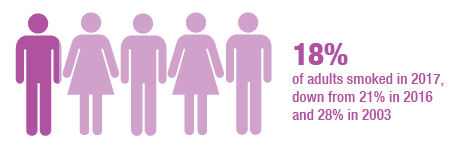
- Smoking prevalence was highest among adults aged 25-34 (24%) and lowest among those aged 75 and over (6%) in 2017.
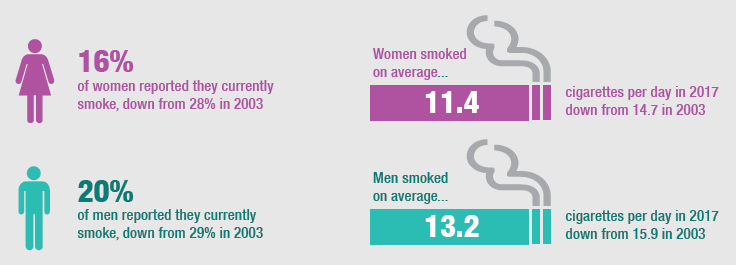
- The percentage of adults who had never smoked regularly or at all increased from 50% in 2003 to 56% in 2017; the figure for ex-regular smoking increased from 22% to 26%.
- Younger adult smokers (aged 16-44) smoked fewer cigarettes per day on average (between 9.6 and 11.4 cigarettes) than those aged 45 and over (between 13.8 and 14.3 cigarettes).
Prevalence of smoking varied by area deprivation level
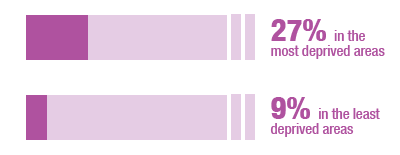
There has been a significant decrease in the proportion of children who are exposed to second-hand smoke in their own home
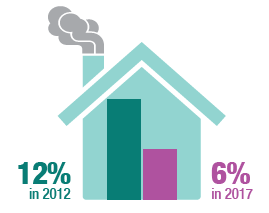
- There was a clear deprivation gradient in the numbers of cigarettes smoked (13.4 in the most deprived areas compared to 8.6 in the least deprived areas).
The gap between smoking prevalence in different areas of deprivation has narrowed but rates remain around 3 times higher in the most deprived areas

The proportion of non-smoking adults exposed to second-hand smoke (based on detectable salivary cotinine), has fallen:
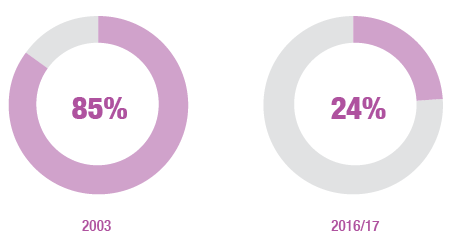
- Current cigarette smoking prevalence corrected for cotinine levels was 31% for men and 22% for women in 2016/2017.
- 50% of adult non-smokers living in the most deprived areas had detectable salivary cotinine (suggesting exposure to second hand smoke), compared with 13% of those living in the least deprived areas.
- In 2017, 48% of cotinine-validated, self-reported non-smoking adults said they were not exposed to smoke in any of the places they were asked about (at their own / other’s home, at work, in cars / vans, outside buildings, or in public places).
Younger age groups were less likely than older to live in homes with no restriction on smoking
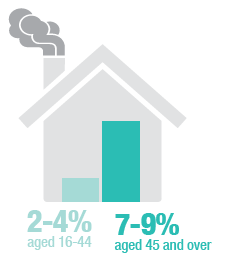
Those in the least deprived areas were most likely to live in homes where people cannot smoke indoors or outdoors
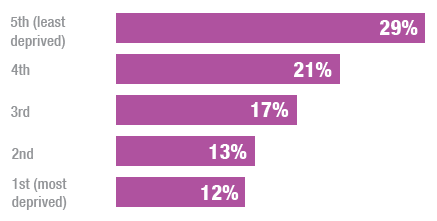
- In 2017, current e-cigarettes use among adults was 7%, the same level as in 2015 and 2016 and a significant increase from 5% since 2014.
- The proportion of adults that had ever used e-cigarettes increased from 15% in 2014 to 19% in 2017.
In 2017, levels of e-cigarette usage was highest in the middle age groups
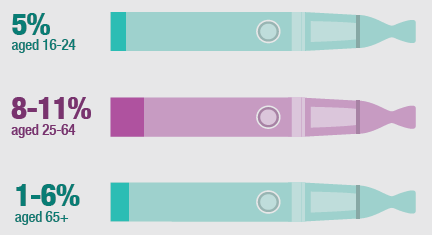
Contact
There is a problem
Thanks for your feedback